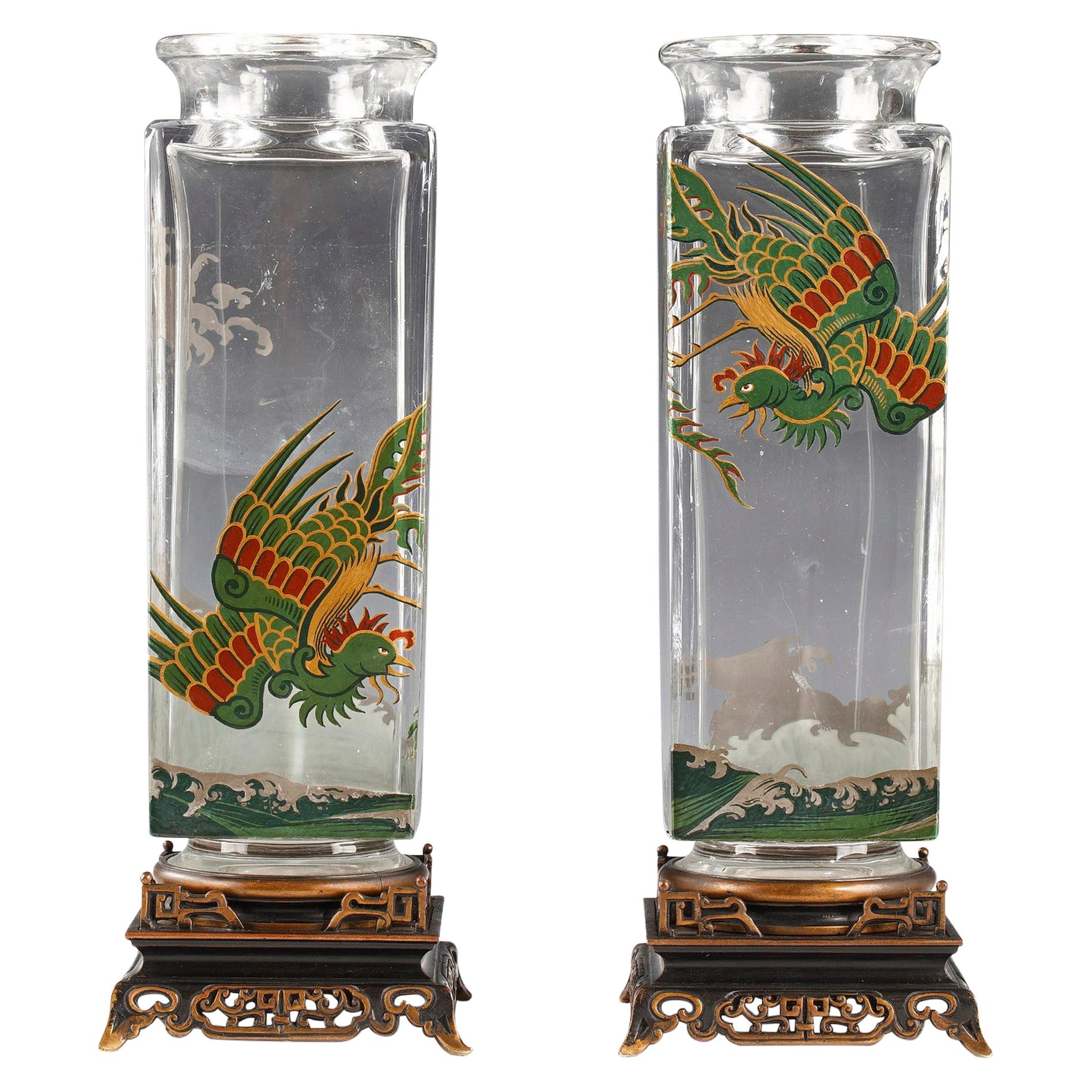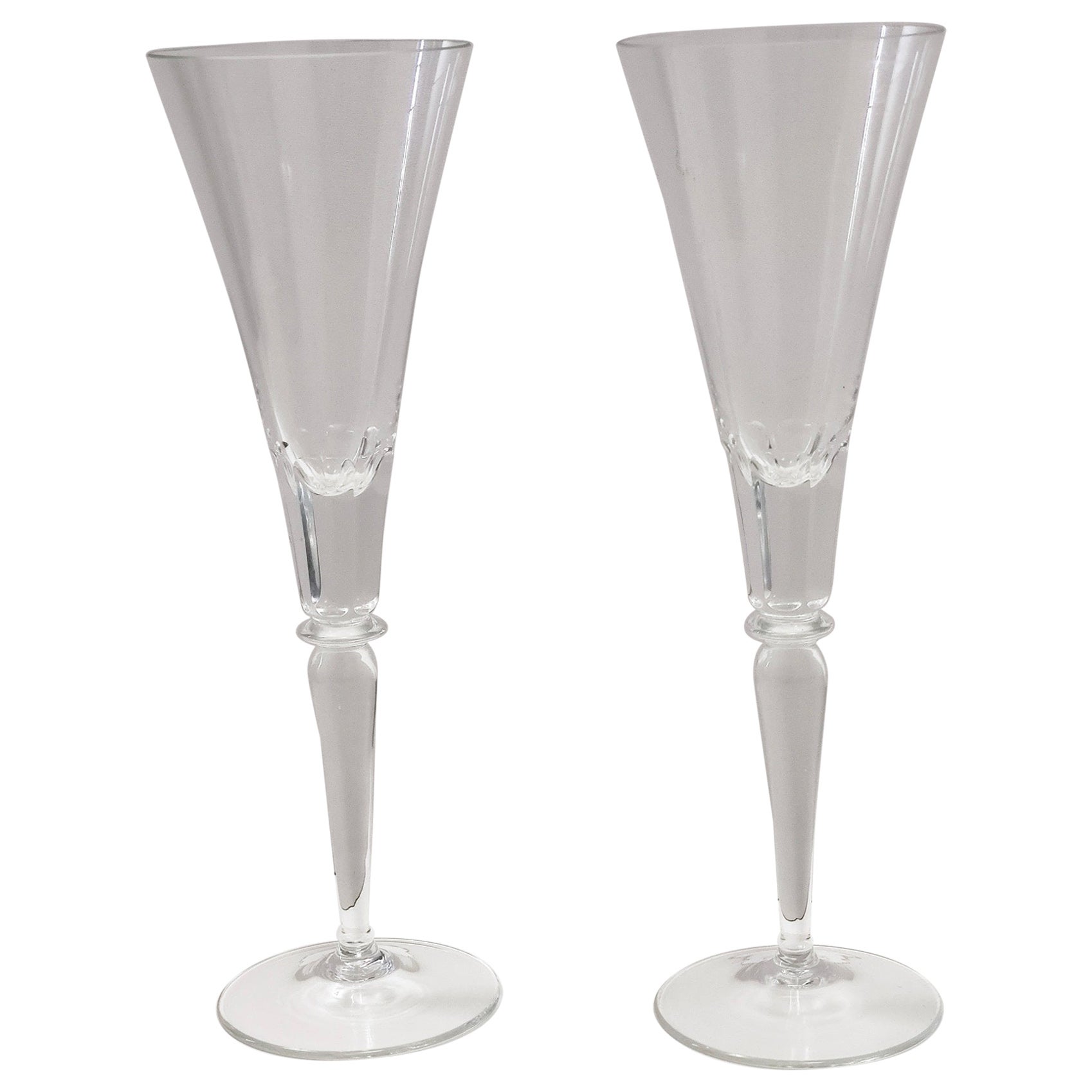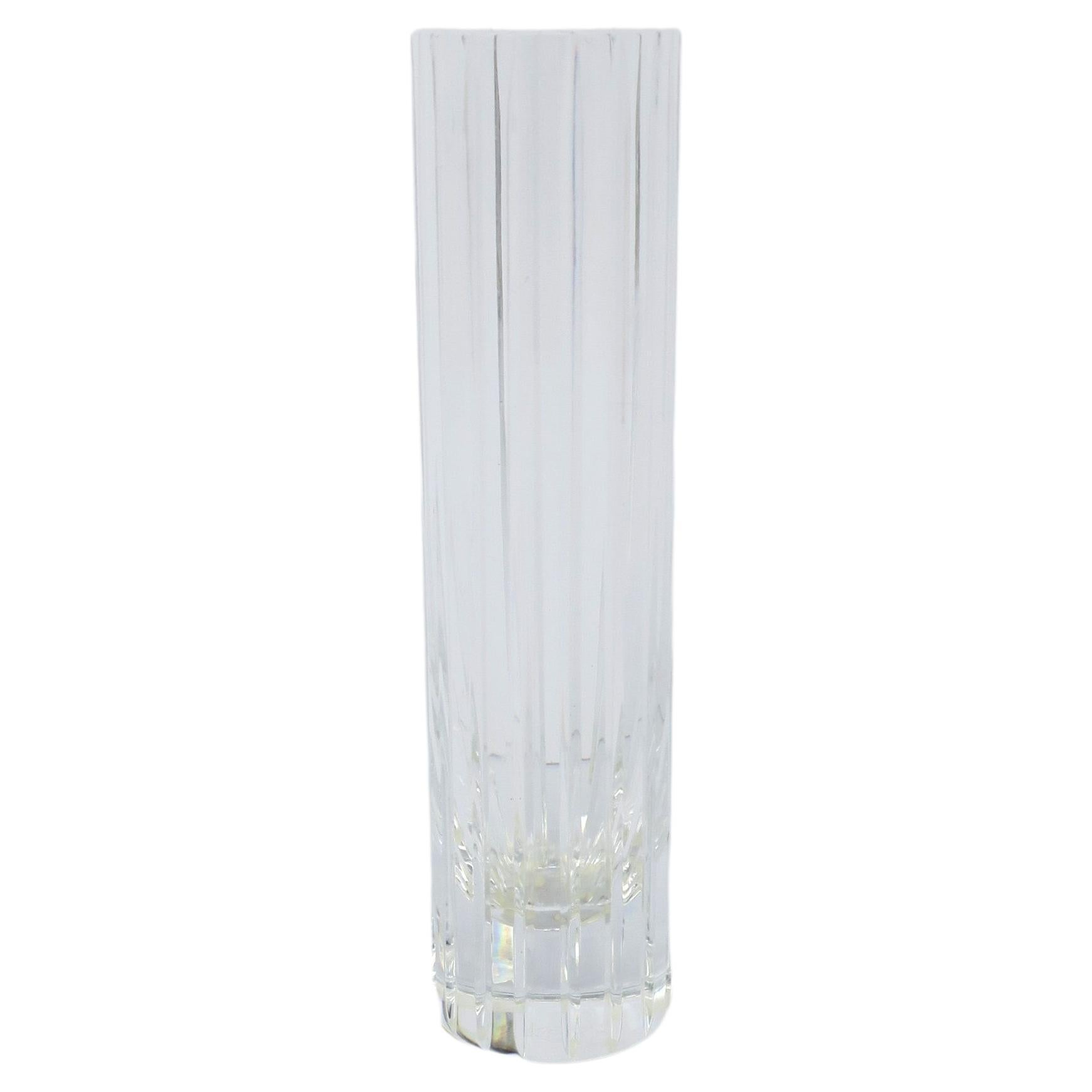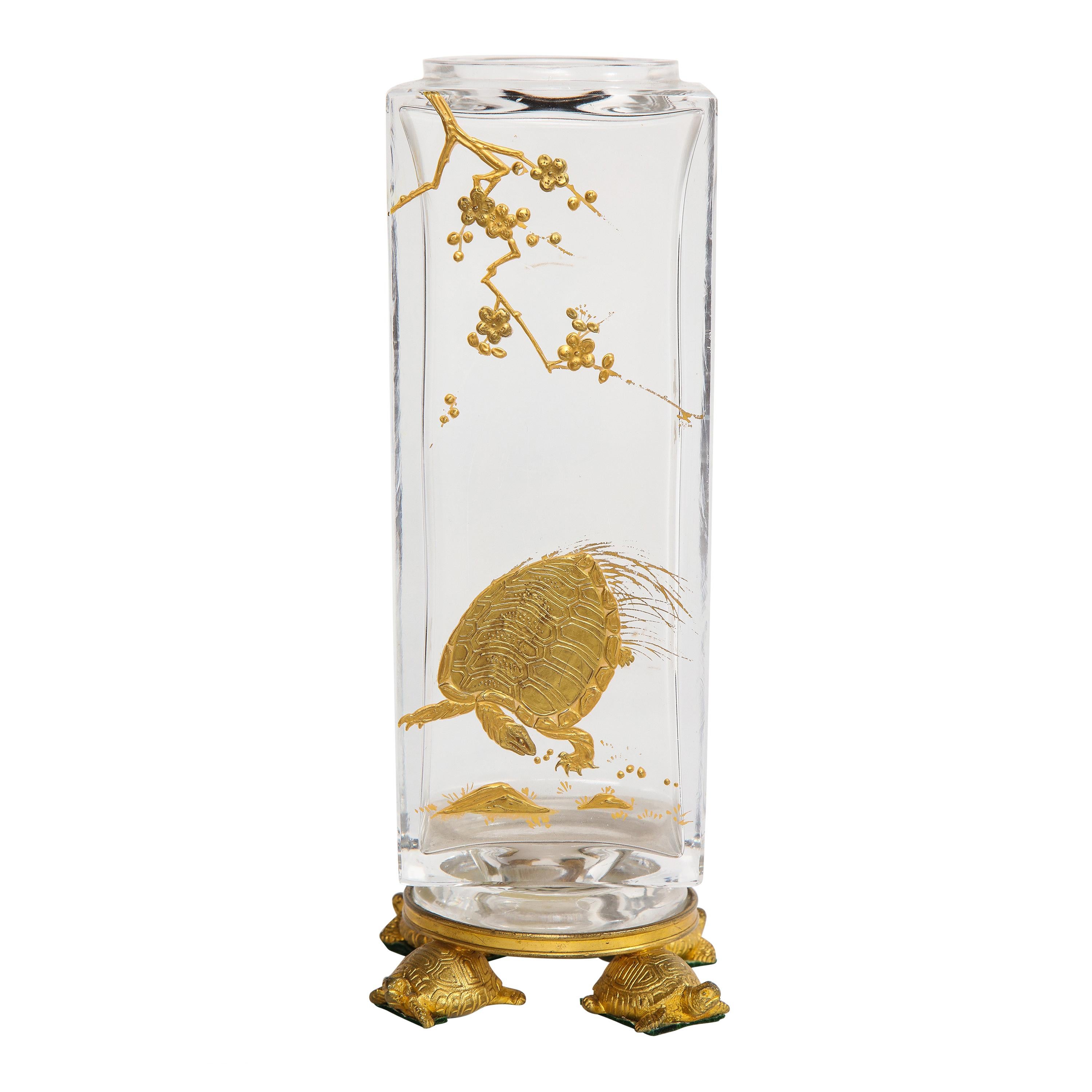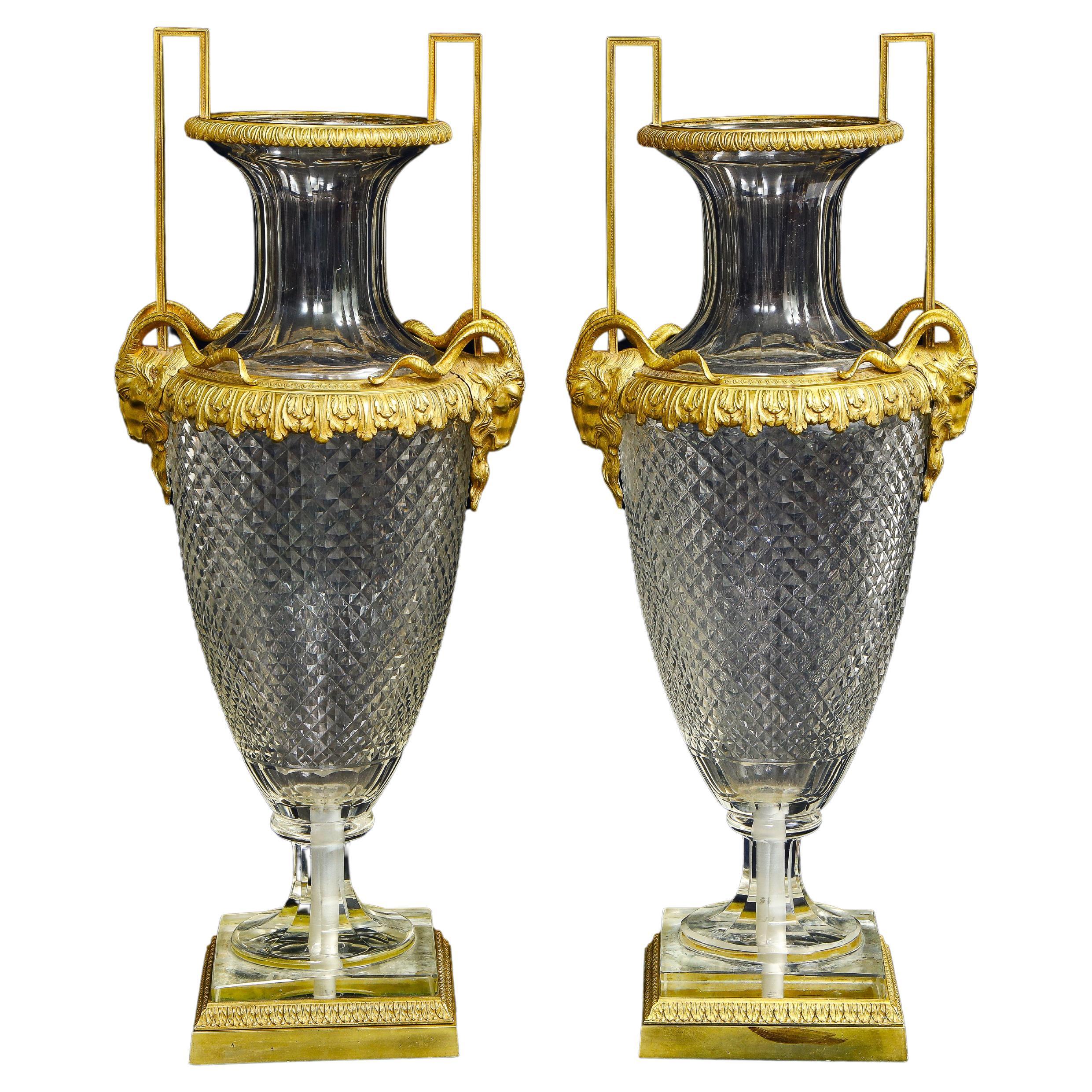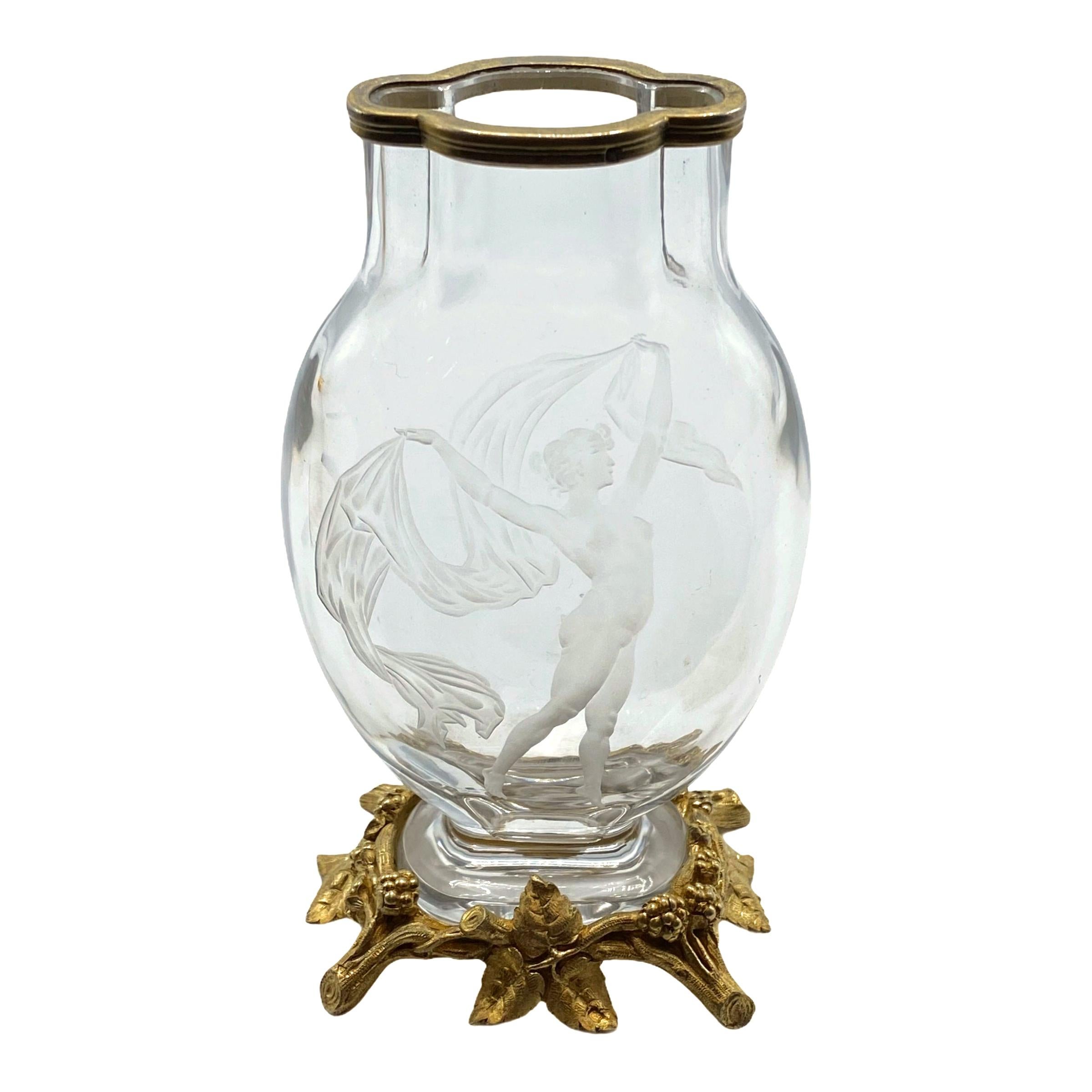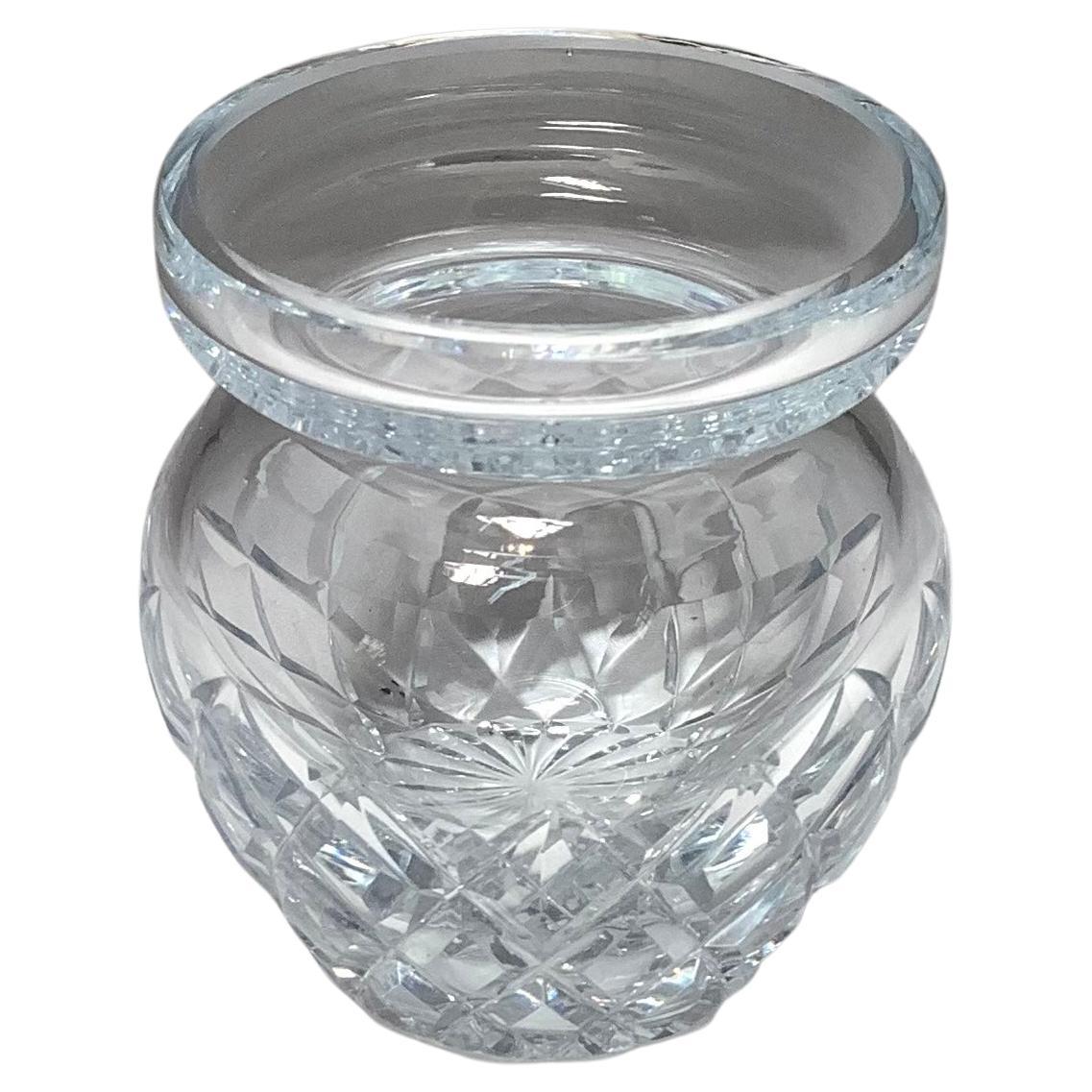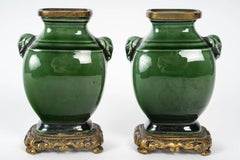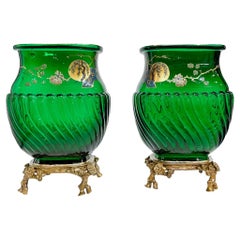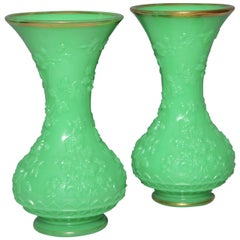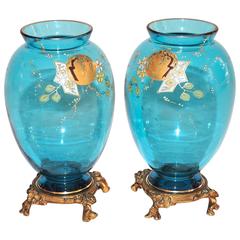
Pair of French Japonisme Blue Crystal Enamel Vases Attributed to Baccarat
View Similar Items
Want more images or videos?
Request additional images or videos from the seller
1 of 7
Pair of French Japonisme Blue Crystal Enamel Vases Attributed to Baccarat
About the Item
- Attributed to:Baccarat (Manufacturer)
- Dimensions:Height: 5.91 in (15 cm)Diameter: 3.15 in (8 cm)
- Sold As:Set of 2
- Style:Japonisme (Of the Period)
- Materials and Techniques:
- Place of Origin:
- Period:
- Date of Manufacture:1880-1890
- Condition:
- Seller Location:Saint-Ouen, FR
- Reference Number:1stDibs: LU261237093633
About the Seller
4.9
Vetted Seller
These experienced sellers undergo a comprehensive evaluation by our team of in-house experts.
1stDibs seller since 2017
55 sales on 1stDibs
Typical response time: 1 hour
More From This SellerView All
- French Japonisme Lacquered Metal Jardinière on Ormolu Stand Signed MarnyhacBy Maison Marnyhac 1, Edouard LievreLocated in Saint-Ouen, FRJardinière Médicis vase shape in copper with gold lacquered decoration on a burgundy background of a Japanese landscape with a volcano and an eagle ...Category
Antique 1870s French Japonisme Planters, Cachepots and Jardinières
MaterialsMetal, Bronze
$18,400 Sale Price20% Off - A Théodore Deck (1823-1891) Enamelled Faience Soliflore Vase circa 1875By Theodore DeckLocated in Saint-Ouen, FRThéodore DECK (1823-1891) A polychromatic enamelled earthenware soliflore and quadrangular shape vase with Sino-Japanese inspiration design of flowers and geometrical friezes all around. Impressed uppercase mark "TH.DECK" under the base. Circa 1875 Born in Guebwiller in Alsace, Théodore Deck trained as a ceramist in his home region, then in Germany. He went into partnership with his brother, Xavier Deck, to create his own factory in Paris in 1858. At the Exhibition of Industrial Arts in 1864, he presented pieces covered with transparent enamels that were not cracked, and then made his first attempts at reliefs under transparent enamels. He developed a bright turquoise color, famously renowned as "Bleu Deck". It is this nuance that we find on the salamander represented on this vase. In 1887 he published a treatise entitled "La Faïence", in which he explained some of his discoveries. That same year, he became director of the Manufacture de Sèvres. Theodore Deck (1823-1891) is a French ceramist born in Guebwiller in Alsace. He is passionate about chemistry and the physical sciences. In 1841, he joined the master stove maker Hügelin father as an apprentice in Strasbourg. In two years, he learned of the methods inherited from the 16th century, such as the encrustation of colored pastes in the style of Saint-Porchaire. This apprenticeship did not prevent him from spending his free time draw-ing or modeling clay in the studio of sculptor André Friederich. Escaping military service, he made a tour of Germany as is the tradition with fellow Alsatian stove-makers. The quality of his work allows him to obtain important orders in Austria for the castles of the provinces and the imperial palaces, in particular for the palace of Schönbrunn. He continues his journey in Hungary to Pest, to Prague, then, going north through Dresden, Leipzig, Berlin and Hamburg. On the strength of his apprenticeship, he arrived in Paris in 1847. Recommended by Hügelin, he went to the stove factory of the Bavarian potter Vogt, located rue de la Roquette. The Revolution of 1848 interrupts production and Deck decides to return to his hometown. His family then advised him to set up a small terracotta workshop: he made a few busts, statuettes, vases, lamps and copies of famous antiques there. Aware that this situation would not allow him to provide for himself properly, he returned to Paris in 1851 where he was employed by the widow Dumas, daughter of the earthenware maker Vogt for whom he had worked. Hired as a foreman, he supplied the drawings and models to the workers, while working the land himself. The following year, he made the decision to settle not far from his former employer at 20, rue de la Fontaine-au-Roi, probably using his ovens. His brother, Xavier Deck, joins him. It was officially in 1858 that the Deck brothers created their business and settled in Paris at 46, boulevard Saint-Jacques. Initially, the brothers only carry out coatings for stoves. But the business is going so well that barely a year after their installation, they want to diversify their production and engage in ceramics for the cladding of buildings as well as in shaped parts. Deck is interested in politics. In 1870, he opted for French nationality and was elect-ed deputy mayor in the 15th arrondissement of Paris. In 1861, at the Salon des arts et industries de Paris, which was held on the Champs-Élysées, Théodore Deck exhibited his works for the first time: these were pieces with an inlay decoration called “Henri II” and others. pieces covered with turquoise blue enamel or decoration in the style of Iznik ceramics.If he wins a silver medal, reviews are mixed, however. The following year, on the occasion of the Universal Exhibition of 1862 in London, he won over English customers. He surprised by presenting, like the previous year, his Alhambra Vase...Category
Antique 1870s French Japonisme Vases
MaterialsFaience
$4,709 Sale Price30% Off - Théodore Deck (1823-1891), Miniature Pair of Faience Vases circa 1870By Theodore DeckLocated in Saint-Ouen, FRTheodore Deck (1823-1891) A deep green enameled faience miniature pair of vases molded in the Chinese Archaistic Taste. Coves in the shape of elepha...Category
Antique 1870s French Chinoiserie Vases
MaterialsFaience
- French 19th Century Pair of Porcelain Cache-PotsLocated in Saint-Ouen, FRPair of polychromed hand painted porcelain with Japonisme floral decoration Ormolu-mounted with open-worked base and rim Louis XVI Style circa 1880.Category
Antique 1870s French Chinoiserie Planters, Cachepots and Jardinières
MaterialsOrmolu
$1,909 Sale Price / set20% Off - French 19th Century Brule Parfum or Pot Pourri VaseLocated in Saint-Ouen, FRA French 19th century perfume or pot pourri vase A hand-painted polychromed enamel on copper Chinese Export bowl designed with flowers and rince...Category
Antique 1870s French Louis XVI Decorative Bowls
MaterialsEnamel, Ormolu
- E.Gallé (1846-1904) French Art Nouveau Cameo Glass Vase « Anemones» circa 1900By Emile GalléLocated in Saint-Ouen, FRÉmile Gallé (1846-1904) French Art Nouveau Caméo Glass Vase « Anemones » circa 1900 Rare Galle French cameo glass vase in dark blue over yellow Blue Anemones flowers design Signed in cameo Gallé Émile Gallé was born in Nancy on 4 May 1846, the only son of Charles Gallé...Category
Antique Early 1900s French Art Nouveau Glass
MaterialsArt Glass
$9,114 Sale Price20% OffFree Shipping
You May Also Like
- Pair of Birds of Paradise Vases Attributed to Baccarat, France, Circa 1880By BaccaratLocated in PARIS, FRElegant pair of square section vases attributed to Baccarat, in enameled crystal with polychrome decoration of birds of paradise, resting on an openwork patinated and gilded bronze b...Category
Antique 1880s French Japonisme Vases
MaterialsCrystal, Bronze, Enamel
- Baccarat Emerald Green Pair of Japonisme Vases with Enamel Sakura Tree and SunBy BaccaratLocated in New York, NYThe bright translucent green glass vases with the spiral-fluted bellies. Enameled necks are embellished with a gilded image of the sun behind a blooming sakura tree in Japanese style...Category
Antique 19th Century French Japonisme Antiquities
MaterialsBronze, Enamel, Gold Leaf
- Pair of French Baluster Shaped Opaline Glass Vases Attributed to "Baccarat"By BaccaratLocated in New York, NYA fine pair of antique French baluster shaped green opaline glass vases, finely modeled with repose leaves and flowers, attributed to "Baccarat" French, circa 1860.Category
Antique 19th Century French Napoleon III Glass
MaterialsOpaline Glass
- Pair of Vintage Transparent Crystal Flutes attributed to BaccaratBy BaccaratLocated in Bresso, Lombardy1930s - 1940s. These flutes are made in high-quality crystal. They are vintage, therefore they might show slight traces of use, but they can be considered as in perfect original con...Category
Vintage 1930s French Mid-Century Modern Glass
MaterialsCrystal
- Antique Japonisme French Baccarat Glass Bronze VaseBy BaccaratLocated in New York, NYAn antique French Baccarat glass vase with a fluted mouth. The vase is adorned with hand painted floral and foliage motifs in the Asian man...Category
Antique 19th Century French Vases
MaterialsBronze
- Baccarat French Crystal VaseBy BaccaratLocated in New York, NYA beautiful and substantial clear transparent crystal vase from French luxury crystal Maison Baccarat, circa late-20th century, France. This elegant vase has long vertical bevel cuts around exterior accentuating its beauty. Beautiful as a standalone piece or with a few flowers at a bedside, vanity, or for a bathroom, desk/office, side table, etc. Markers' mark/acid stamp "Baccarat" "France" on underside, authenticating piece, as shown in last image. Dimensions: 1.75" Diameter x 6.88" Height. Baccarat Heart...Category
Late 20th Century French Modern Crystal Serveware
MaterialsCrystal
Recently Viewed
View AllMore Ways To Browse
Blue Baccarat
Crystal Vases With Ormolu
Blue And Gilt French Mirror
French Blue Crystal Vase
Baccarat Vase Mount
Baccarat Vase Ormolu
Baccarat Blue Crystal
Baccarat Mirror
Baccarat Blue Vases
French Baccarat Ormolu Vases Pair
Baccarat Japonisme
Dark Green Glass Vases
Resin Fruit
Orange China Vase
Orange Chinese Vase
Purple Chinese Vases
Mid Century Italian Pottery Ceramic Vase
Large Antique Ceramic Vessel

